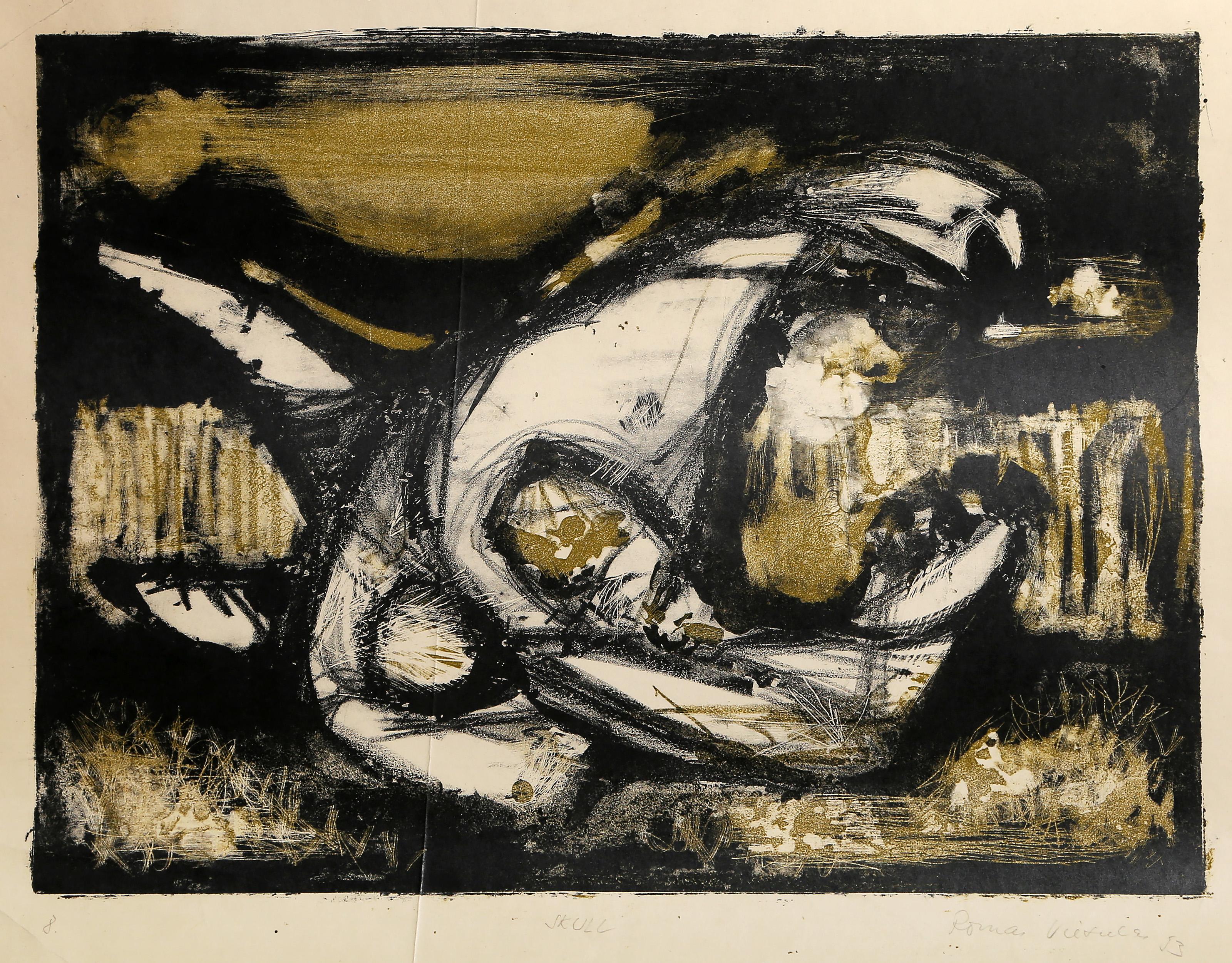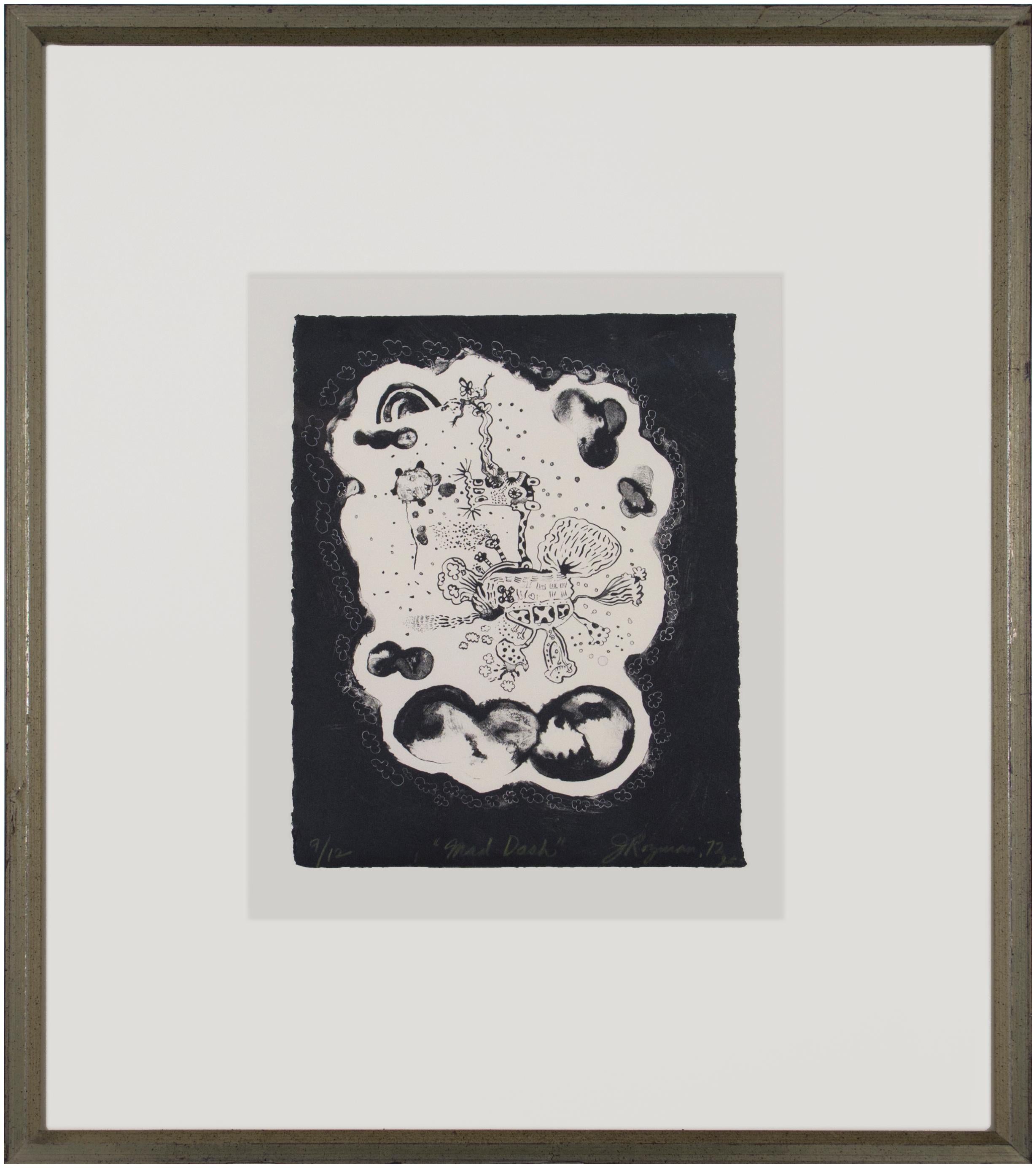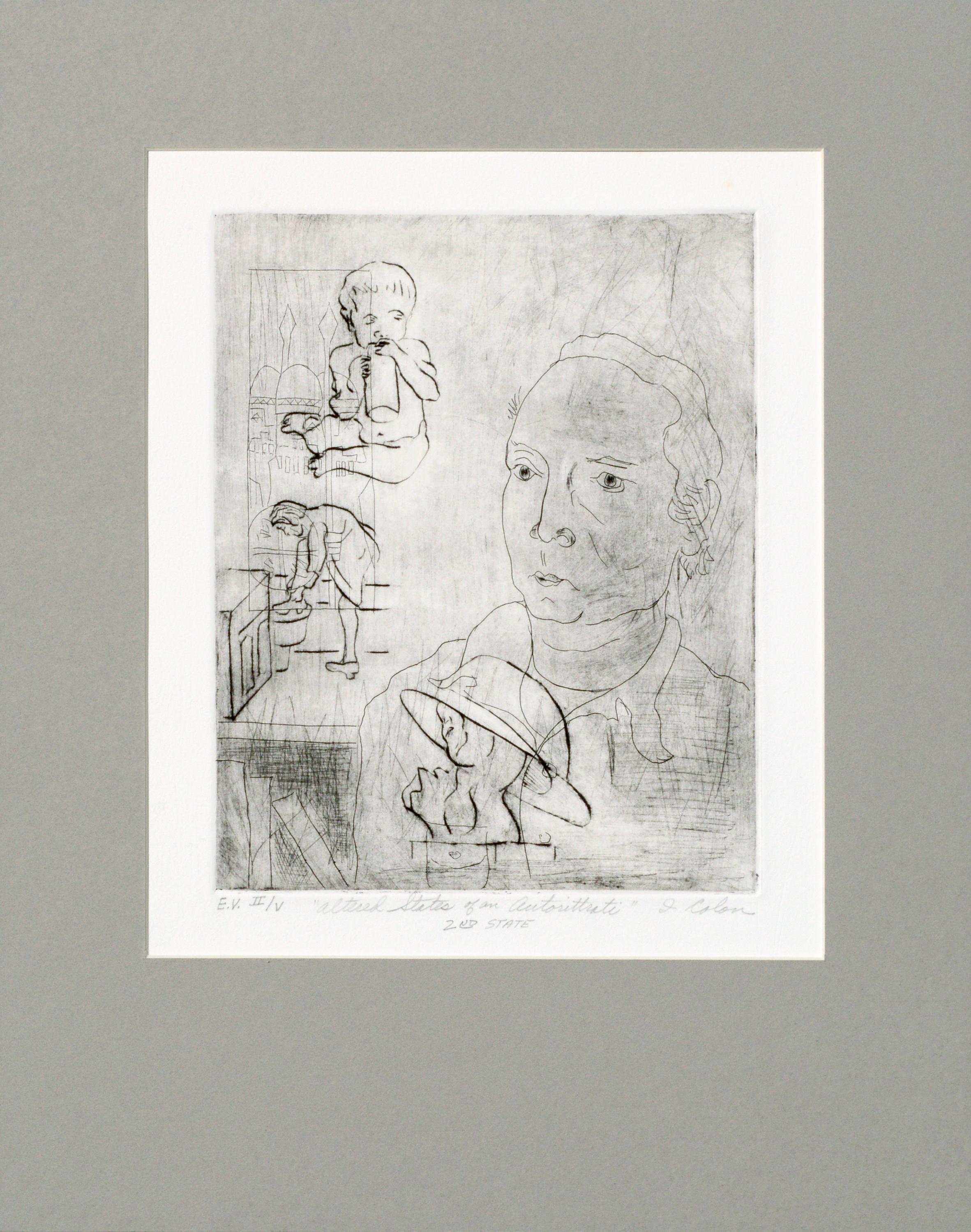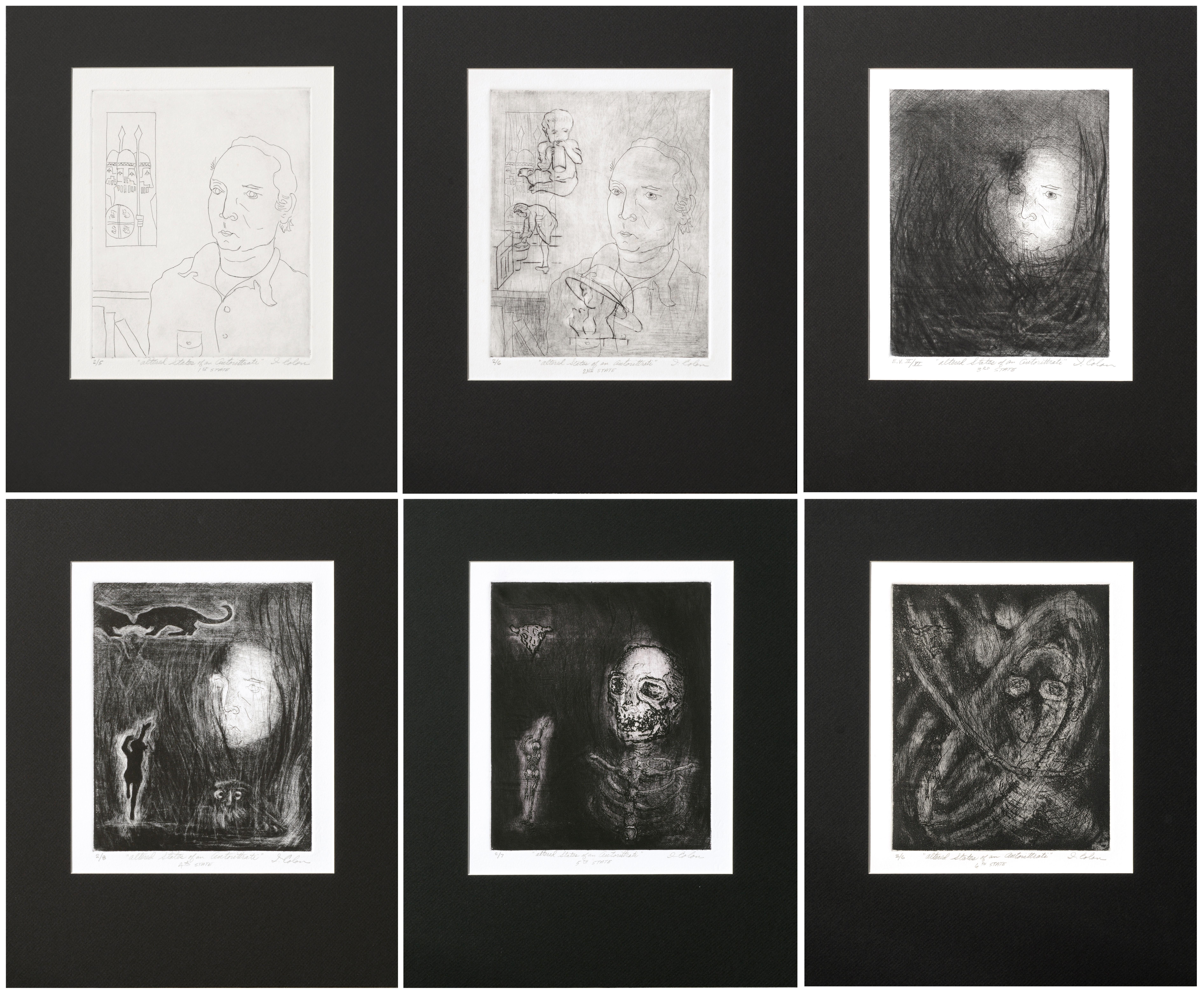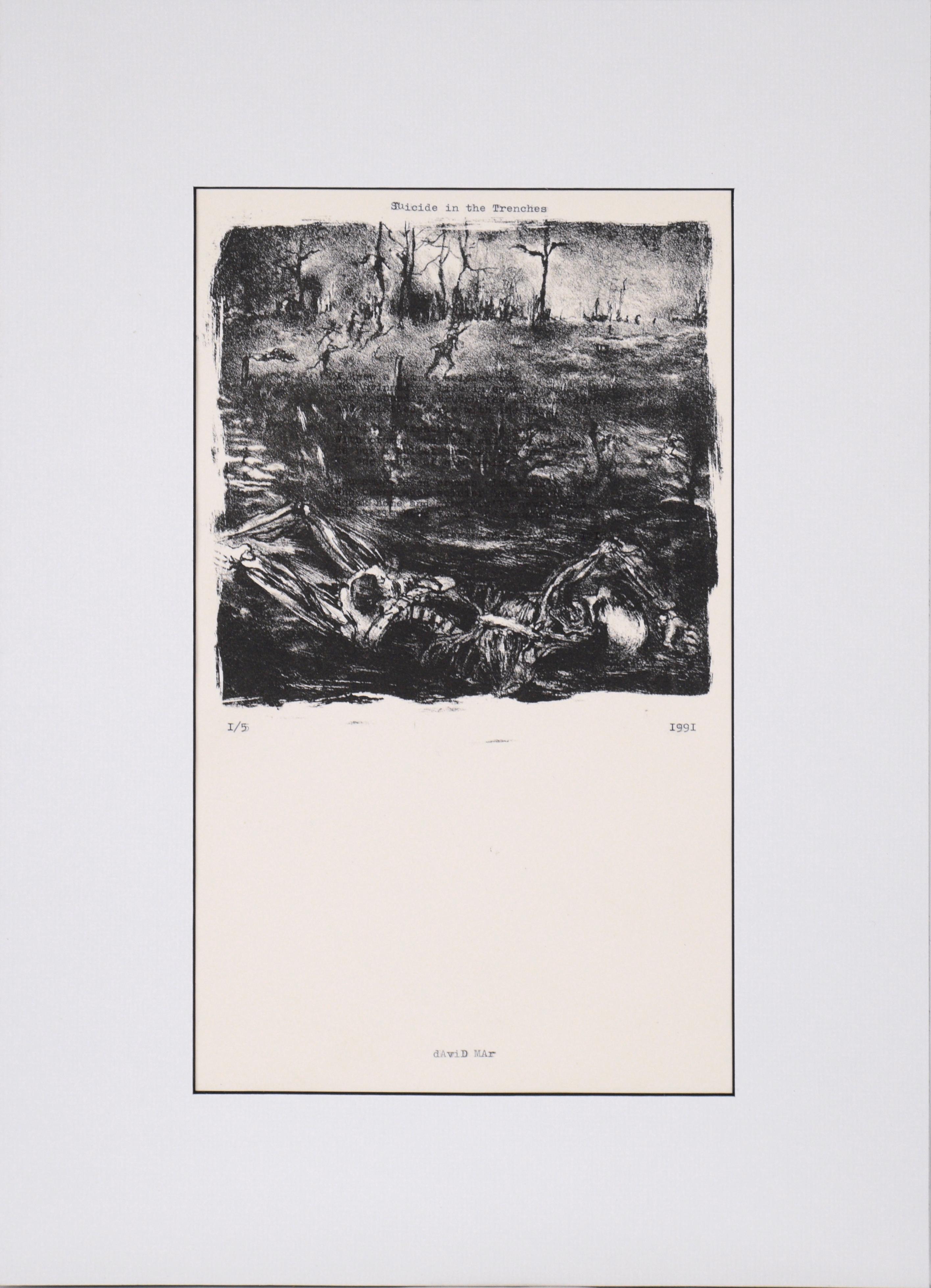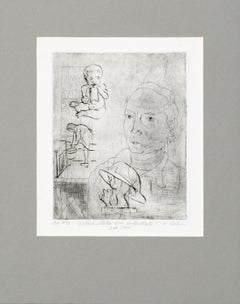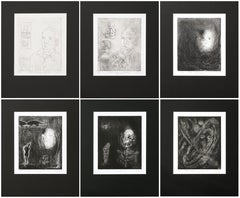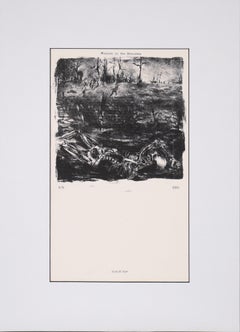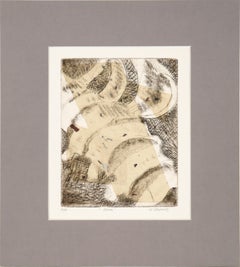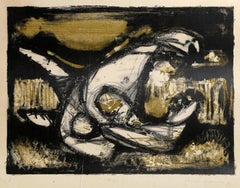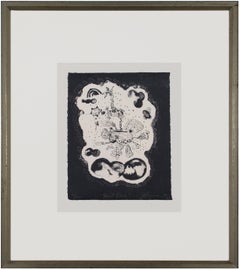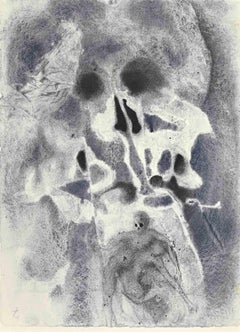Items Similar to "Altered States of an Autorittrati", Skeleton Limited Edition Lithograph
Want more images or videos?
Request additional images or videos from the seller
1 of 11
I. Colon"Altered States of an Autorittrati", Skeleton Limited Edition Lithographc. 1990s
c. 1990s
$550
£428.56
€486.18
CA$790.47
A$870.39
CHF 451.33
MX$10,307.78
NOK 5,729.40
SEK 5,354.77
DKK 3,631.22
About the Item
Striking figurative abstract lithograph with skeleton by California artist I. Colon (20th Century). Numbered, titled, and signed along the bottom edge ("E.V. IV/X "Altered States of an Autorittrati" 5th State I. Colon"). Part five of a six-part series depicting a transformation of self-portraits. Presented in a new cream mat with foam core backing. No frame.
Image size: 15"H x 11"W
I. Colon (20th Century) is an artist from California, and a peer of Patricia A. Pearce (American, b. 1948).
- Creator:
- Creation Year:c. 1990s
- Dimensions:Height: 18 in (45.72 cm)Width: 14 in (35.56 cm)Depth: 0.25 in (6.35 mm)
- Medium:
- Movement & Style:
- Period:
- Condition:Very good condition New mat.
- Gallery Location:Soquel, CA
- Reference Number:Seller: JT-DBH61801stDibs: LU5425747922
About the Seller
5.0
Platinum Seller
Premium sellers with a 4.7+ rating and 24-hour response times
Established in 1986
1stDibs seller since 2014
3,039 sales on 1stDibs
Typical response time: <1 hour
- ShippingRetrieving quote...Shipping from: Soquel, CA
- Return Policy
More From This Seller
View All"Altered States of an Autorittrati" 2nd State, Modernist Self-Portrait
By I. Colon
Located in Soquel, CA
Bold lithograph depicting an abstracted self-portrait with other figurative elements symbolizing the artist's past by California artist I. Colon (20th Century). Numbered, titled, and...
Category
Late 20th Century Abstract Impressionist Figurative Prints
Materials
Paper, Ink, Lithograph
"Altered States of an Autorittrati", Modernist Self-Portrait Complete Series (6)
By I. Colon
Located in Soquel, CA
Bold series of modernist figurative abstract lithographs by California bay area artist I. Colon (20th Century). Each piece is individually numbered, titled, and signed along the bottom edge (see below for exact numbers and titles). Complete set of a six-part series depicting a transformation of self-portraits. Presented in new black mats with foam core backing. No frame. Each piece measures 18"H x 14"W (to the edge of the mat). Image size: 15"H x 11"W ea.
Numbers and titles:
2/5 "Altered State...
Category
Late 20th Century Surrealist Figurative Prints
Materials
Paper, Ink, Lithograph
Abstract Etching (no. 1/5) by David Mar
Located in Soquel, CA
Bold black and white print by David Mar (American, 20th Century). An abstract print of wartime imagery is layered over the poem "Suicide in the Trenches" by Siegfried Sassoon...
Category
1990s Contemporary Figurative Prints
Materials
Paper, Ink, Etching
"Bones" - Abstracted Etching in Ink on Paper (Artist's Proof)
By Doris Warner
Located in Soquel, CA
"Bones" - Abstracted Etching in Ink on Paper (Artist's Proof)
Abstracted print by Doris Ann Warner (American, 1925-2010). The subject of this piece is a close-up depiction of bones, ...
Category
1980s Abstract Interior Prints
Materials
Paper, Ink, Etching
Time And Space - Black and White Lithograph On Paper
By I. Colon
Located in Soquel, CA
Striking abstract expressionist lithograph by I. Colon (20th Century). An open hand with a baby in the palm is the focal point with objects, including a spaceship, an eye and doodles...
Category
Late 20th Century Abstract Expressionist Figurative Prints
Materials
Paper, Ink, Lithograph
Face with a Mustache - Abstracted Lithograph by Cathleen Panttaja
Located in Soquel, CA
Face with a Mustache - Abstracted Lithograph by Cathleen Panttaja
Hip Woodcut Print done at the height of the Flower Power 60s, of a man with a large Moustache. Cathleen Panttaja (Am...
Category
1970s Abstract Impressionist Figurative Prints
Materials
Paper, Ink, Woodcut
You May Also Like
Skull, Abstract Expressionist Lithograph by Romas Viesulas
Located in Long Island City, NY
Romas Viesulas, Lithuanian (1918 - 1986) - Skull, Year: 1953, Medium: Lithograph, signed, titled and dated in pencil, Image Size: 12.25 x 16.25 inches, Size: 16.25 x 20.5 in. (41...
Category
1950s Abstract Expressionist Abstract Prints
Materials
Lithograph
'Mad Dash' original lithograph signed by Joseph Rozman
By Joseph Rozman
Located in Milwaukee, WI
'Mad Dash' is a print that exemplifies the work of Joseph Rozman during the 1970s, moving beyond the playful pictographs of the previous decade and morphing into an increasingly surr...
Category
1970s Surrealist Figurative Prints
Materials
Lithograph
Untitled
By Charles Eckart
Located in San Francisco, CA
This artwork "Untitled" 1977, is an original etching on Wove paper by noted American artist Charles Eckart, b.1935. It is hand signed, dated and numbered 7/50 in pencil by the artist...
Category
21st Century and Contemporary Abstract Expressionist Figurative Prints
Materials
Etching
Iosas Sepultus in Mausoleo Patrum - Lithograph - 1964
By Salvador Dalí
Located in Roma, IT
Iosas Sepultus in Mausoleo Patrum is a Color lithograph on heavy rag paper realized in 1964. It is part of Biblia Sacra vulgatæ edition is published by Rizzoli-Mediolani between 1967...
Category
1960s Surrealist More Prints
Materials
Lithograph
$374 Sale Price
35% Off
Surreal Composition - Original Lithograph - Mid-20th Century
Located in Roma, IT
Surreal Scene is an original lithograph realized by an anonymous Artist in the mid-20th Century.
Good Conditions.
Numbered. Edition, 63/90.
The artwork is depicted through soft st...
Category
Mid-20th Century Modern Figurative Prints
Materials
Lithograph
Black and White Abstract Figurative Etching Edition 98/200
By Jorge Castillo
Located in Houston, TX
Monochromatic abstract figurative etching by Spanish painter Jorge Castillo. The piece depicts an abstract landscape overlooking an empty view from what appears to be a cave. Figures...
Category
1970s Abstract Abstract Prints
Materials
Etching
More Ways To Browse
Louis Delsarte
Luciano Guarnieri
Luigi Caldanzano
Luis Vidal Molne
Manlio Bacosi
Marc Chagall Art Books
Marc Chagall Bible Series
Marc Chagall Granada
Marc Chagall Green River
Marc Chagall Odyssey
Marc Chagall Towards Another Light
Marcus Brutus
Mardi Gras Posters Vintage
Margaret Keane Lithograph
Maria Farmer
Maria Laredo
Marie Fox
Marine Flag
